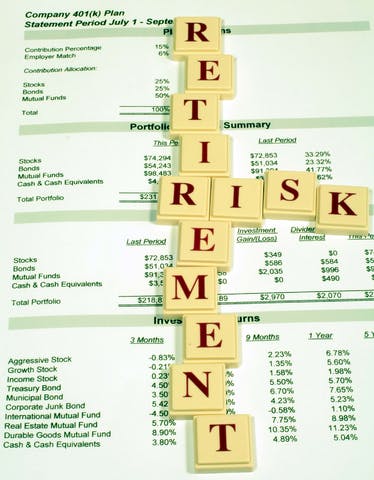You’re doing more with less, like everyone else — reduced budgets that translate into decreased benefits, more work as layoffs happen, etc. The last thing you need is cynicism about your perpetually sunny 401(k) plan!
Is the 401(k) still the best deal in town?
Yep. Every financial advisor under the sun says the company 401(k) is the best deal in town. Sure, there’s a lot of savings and investing options available to individuals. But, even with the stock market dancing to disco, employees should always come out ahead with a 401(k). Remember, there’s:
- FREE money added to your account when you save yourself;
- Great tax breaks (which translate to more free money);
- Low fees to participate (we’ll come back to new fee disclosure regulations);
- No transaction fees (typically)
- Chance to increase your account through investment returns
- Solid advice, in the form of self-management tools or telephonic counseling
While eTrade’s commercials are a lot more fun than most employee communication, no brokerage account offers free services plus free deposits just for participating. Nor can the local bank with a savings account, a money-market account or an IRA.
Is it free?
Employees are clear that you’re helping them save for their retirement. They see on their account statements, the bucket of money from you, and what they’ve contributed. But most don’t pay attention to the fine print. They expect their employers to act on their behalf. And, certainly, they expect that free means free.
Do they see the administrative costs anywhere? Do you pick them up? Are the prospectus pamphlets easily accessible to see the investment costs of each option in your plan? Do employees understand that they’re getting a good deal?
There’s a potential disconnect between matching contributions and investment or administrative fees — especially if you catch employees off guard. The money involved may be small to you but you can’t afford the mixed message.
Supreme Court hubbub
Financially savvy employees at your company may be talking about the Supreme Court ruling on Jones v Harris Associates. What does it mean that there’s a different fee structure for a big pension fund versus a smaller mutual fund, they ask?
The unanimous Supreme Court [PDF] decision upheld existing law that says generally that the free market should decide what constitutes reasonable fees. If big clients negotiate for a price break on investment services, well, that’s just the free market at work. Said another way, educate yourself if you’re buying investment services.
Yes, this is the time to proactively address the topic
In an era of populist cynicism against all financial institutions, now is the time to be sure employees know how much they pay in fees. It’s never a good idea to hide fee explanations in the SPD or assume the topic is adequately covered by fund prospectus. Here are a few tactics that the best employers are using:
- Promote your company’s buying power to lower administrative fees
- List the administrative fee charged by your third party vendor on participant statements
- Post the prospectus of your funds on your website
- Offer advice on how to compare fund performance and fees listed in each prospectus
- Provide examples on how the fees add up over time
- Keep the message current through frequent, brief messaging (like Twitter or your benefits blog)
- Steal our language on why the 401(k) is still the best deal around! (See above.)
By the way, think open enrollment is just a time to talk about health and welfare plans? We recommend you use that opportunity to remind employees about all your other benefits too — including that 401(k)!
Embed these definitions in your materials
A simple tactic is to add definitions to your SPDs and 401(k) Welcome Kit—defining administrative fees and investment fees. Modify this sample copy to suit your situation:
- Administrative fees. The cost to maintain your account, including record keeping, accounting, issuing statements and hosting a website with planning tools. You can see these fees listed every month on your statement. The company pays these fees.
- Investment fees. The cost to manage the individual mutual funds available through our 401(k), including investment advice and brokerage fees to make trades on individual equities held within the fund. Investment fees vary by fund, and are deducted from your investment returns. You can expect a range between 1—3 percent. You pay these fees.
New tools for the plan sponsor—and the consumer
While not employee-friendly, your team will be able to see fees—investment and recordkeeping—in a consistent way. Starting in July 2011, vendors will have to conform the way they disclose their 401(k) fees [PDF] to you as a plan sponsor.
Armed with this fee information, you’ll be better equipped to confidently say you’re truly leveraging your buying power and getting the very best deal in town. Also, you may want to refer employees to the Department of Labor directly, a neutral source. A Look At 401(k) Plan Fees is a good place to start.
